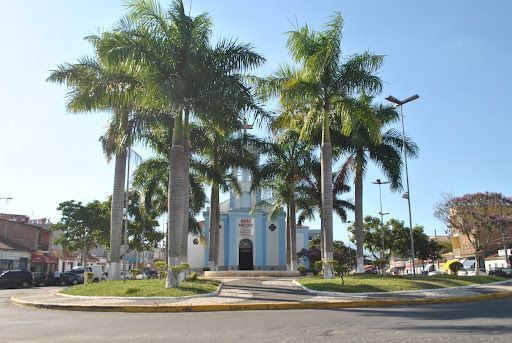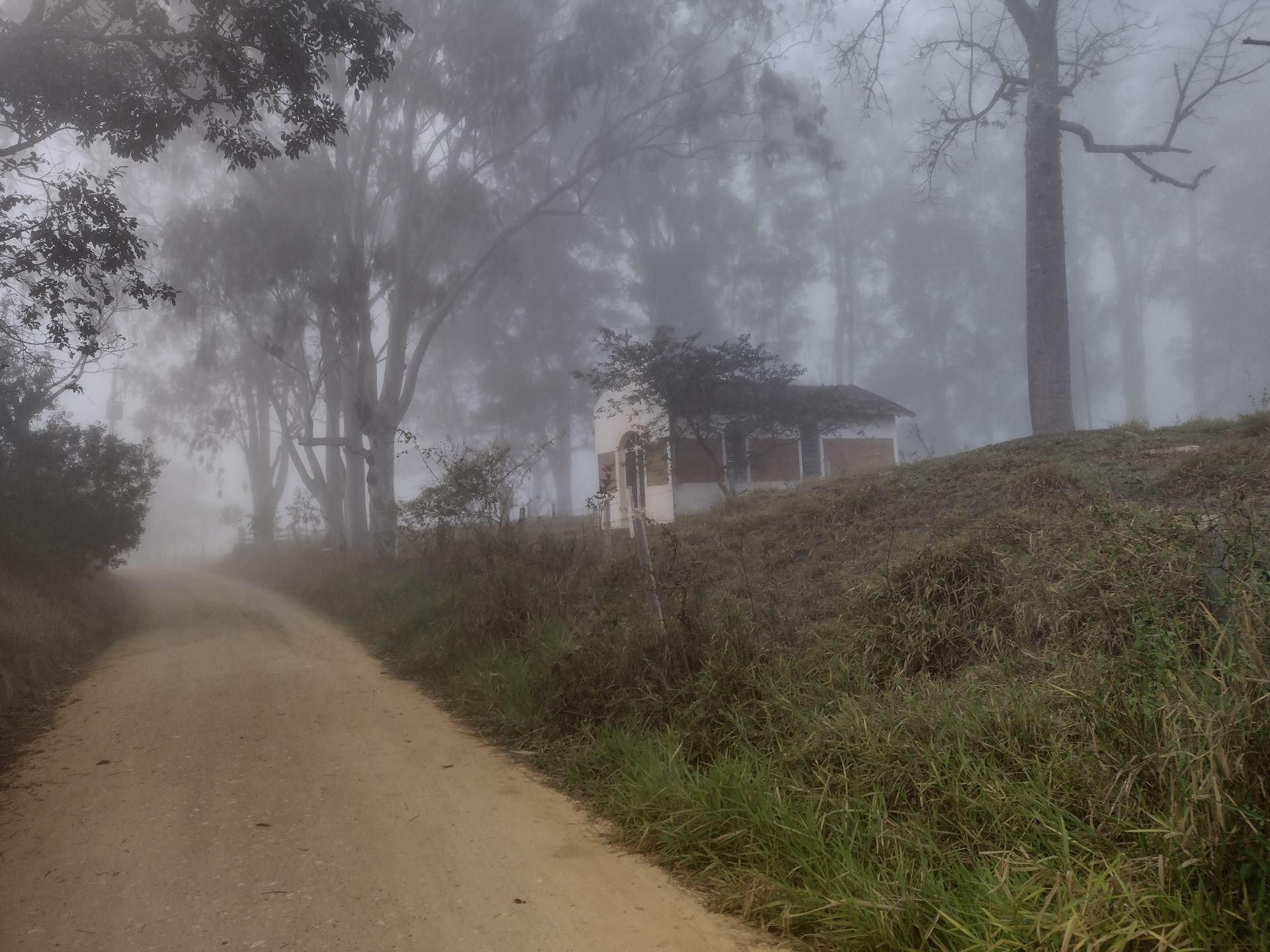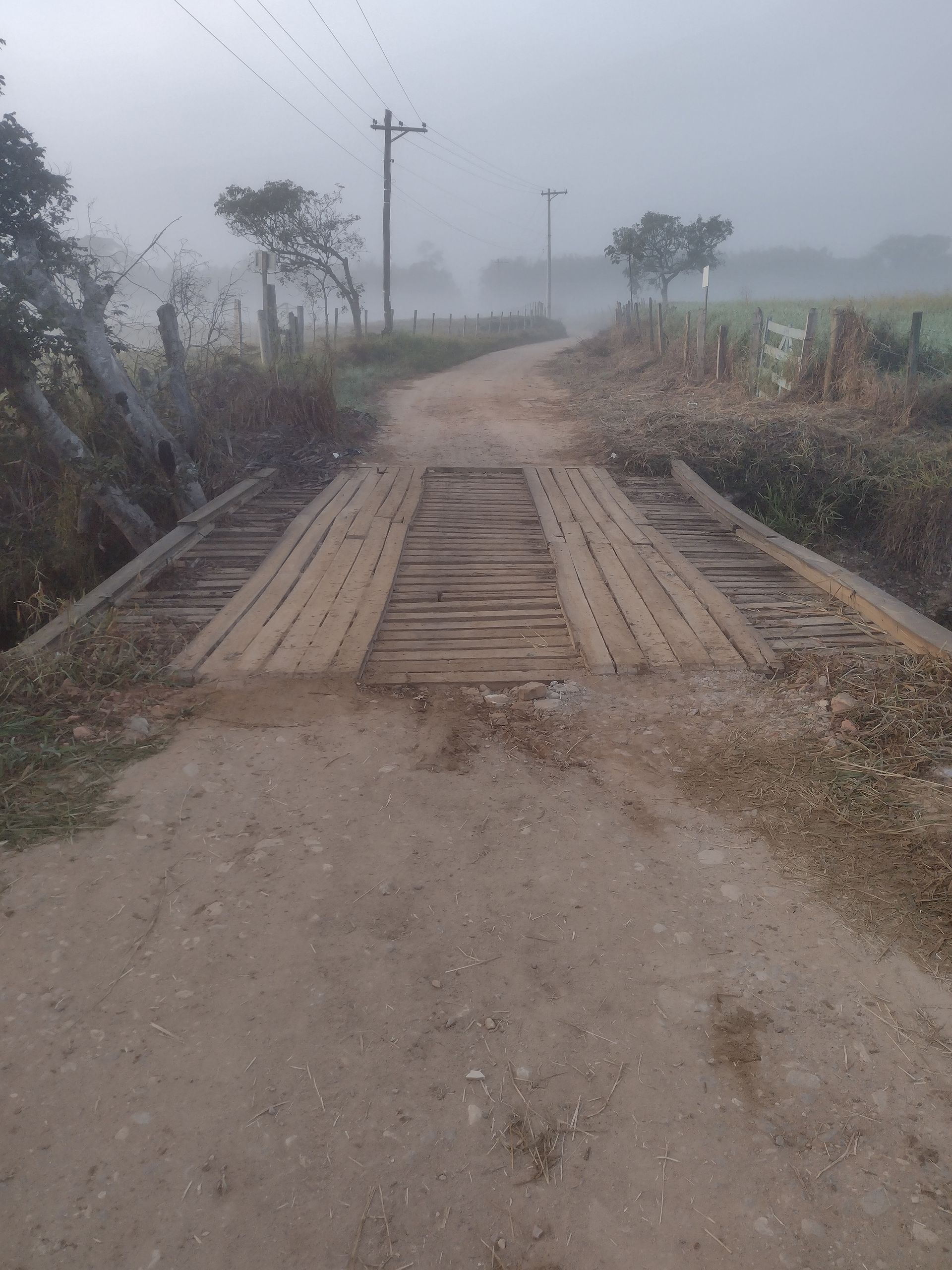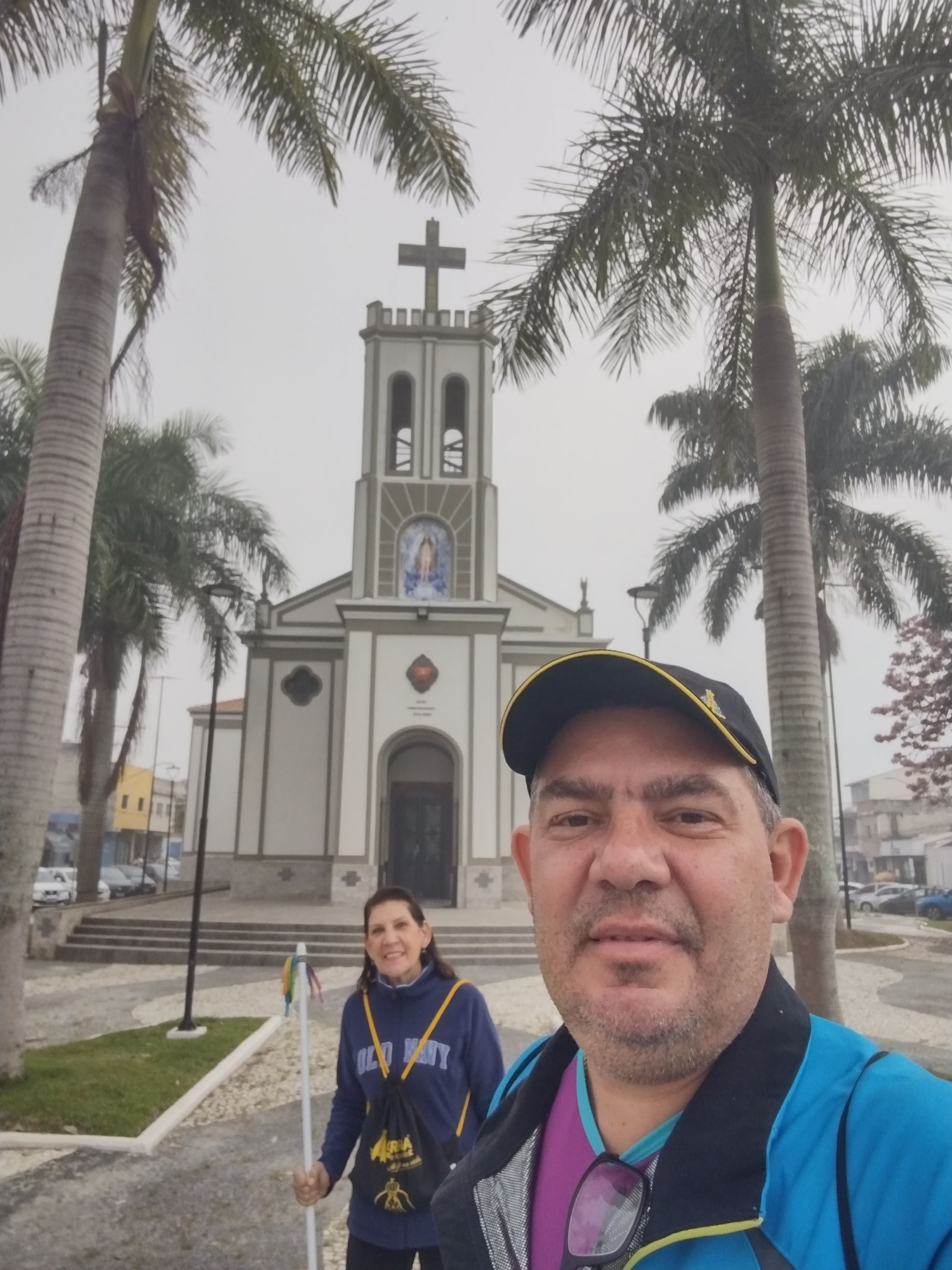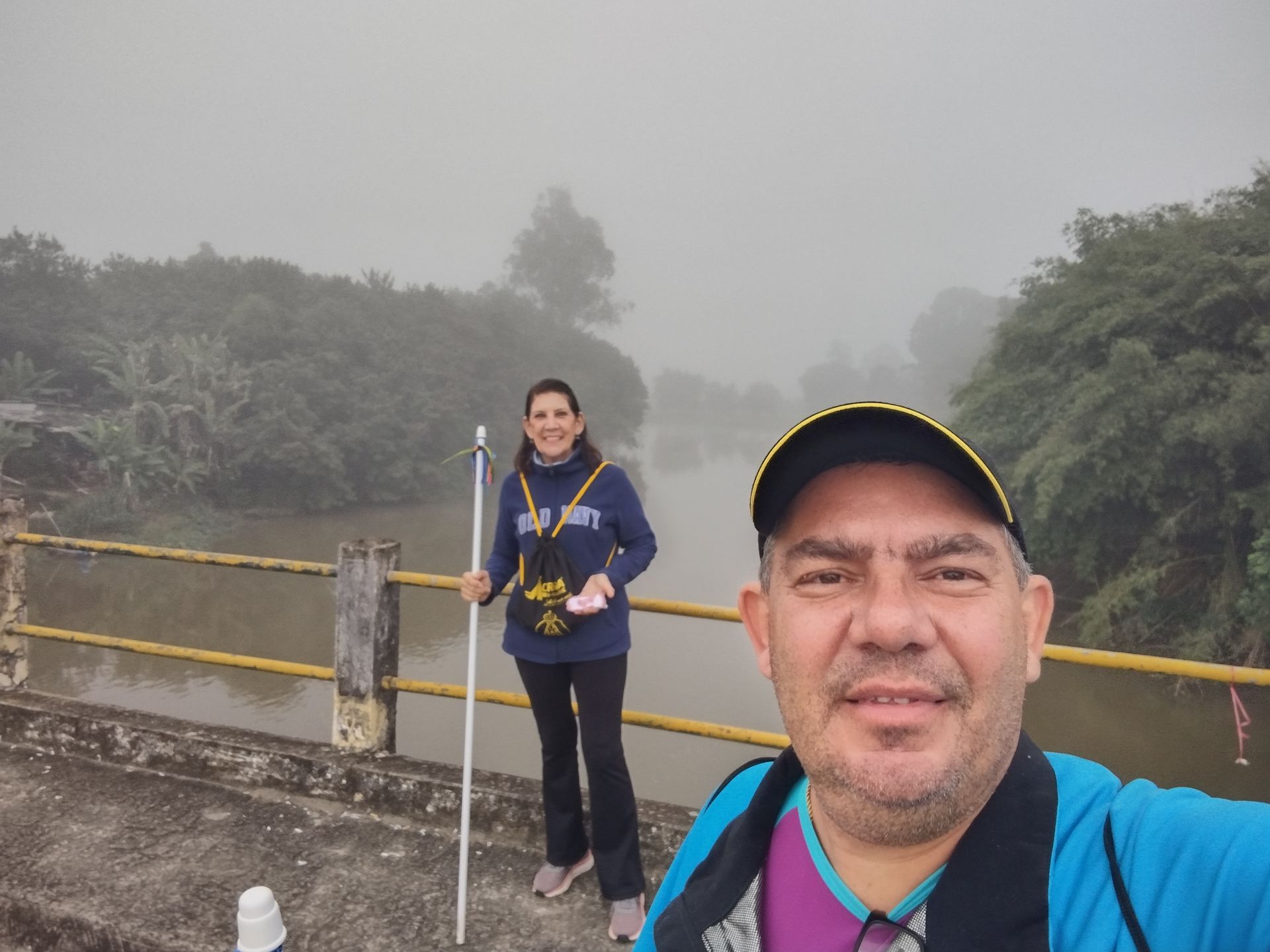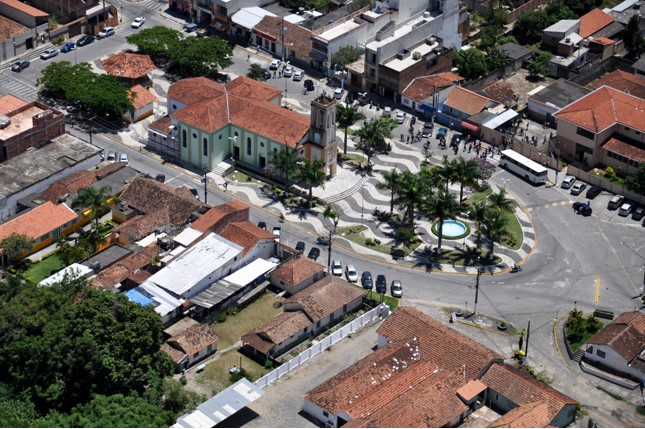Pirapora do Bom Jesus - SP
On this page, the Portal Peregrino da Esperança presents the city of Pindamonhangada, located in the interior of São Paulo, which stands out both for its historical importance and for its role in the economic, cultural and social development of the Paraíba Valley. The chosen Patron Saint was Our Lady of Good Success.
🕊️ “When all seems lost, it will be the happy beginning
of complete restoration.” (Our Lady of Good Success)
Features of the City of Pirapora do Bom Jesus - SP
Pirapora do Bom Jesus is a city in the interior of the state of São Paulo, deeply marked by its religiousness and the symbolic meaning of its name. “Pirapora” derives from the Tupi-Guarani language and means “fish jump”, in reference to the waterfalls of the Tietê River that border the city and were historically indigenous fishing spots. “Bom Jesus” refers directly to the image of Senhor Bom Jesus, whose devotion became the central element of the local identity. The city was consolidated based on the worship of the miraculous image found, according to tradition, by a slave on the banks of the river, in the 18th century. Since then, Pirapora has become one of the oldest and most traditional centers of religious pilgrimage in Brazil, attracting pilgrims from different parts of the state and the country.
The city's urban and economic growth has always been closely linked to popular faith and religious manifestations, which are particularly intense during major religious festivals in honor of the Lord Bom Jesus. The Sanctuary dedicated to the sacred image is the spiritual heart of the city, hosting masses, pilgrimages, and celebrations that attract thousands of people every year. On specific dates, such as August, the flow of believers completely transforms the city's daily life, generating a positive impact on commerce and strengthening the religious tourism sector. Pirapora do Bom Jesus, therefore, is more than just a geographic location; it is a space of devotion, popular culture, and spiritual reunion that spans generations.
In addition to its strong religious influence, the city preserves natural landscapes of great beauty, with emphasis on the Tietê River, which, although it poses environmental challenges common to urbanized riverside regions, still serves as a symbolic and historical reference for the local population. The city is surrounded by green areas and hills, which provide a unique and welcoming landscape. Pirapora also preserves an urban layout with elements that recall the past, such as historic buildings, narrow streets and squares that reinforce the traditional atmosphere of a city in the interior of São Paulo. Although it has not undergone a rapid urbanization process like neighboring cities in the Metropolitan Region of São Paulo, Pirapora maintains its own, more serene rhythm, which preserves characteristics of the country way of life.
In recent years, Pirapora do Bom Jesus has sought to diversify its economic activities and strengthen its infrastructure, while maintaining religious devotion as the basis of its cultural and social identity. The local government has invested in actions to preserve historical heritage, support religious events and promote sustainable tourism. At the same time, challenges related to urban development, education and sanitation are still part of everyday reality, requiring planning and public policies that respect the city's peculiarities and its religious vocation. The interaction between tradition and modernity, faith and development, has become one of the main axes of transformation in Pirapora.
Pirapora do Bom Jesus remains, above all, a land of faith, hospitality and tradition. Its history is intertwined with the history of popular Catholicism in Brazil, and is an example of the power that spirituality exerts in organizing the social and cultural life of a community. The city remains alive thanks to the devotion of its inhabitants, the constant arrival of pilgrims and the commitment to preserving a heritage that spans centuries. It is in this intertwining of landscape, religiosity and history that Pirapora establishes itself as a unique place, where the sacred and the everyday coexist in harmony, shaping the character of a city deeply rooted in its origins.
Pirapora do Bom Jesus plays a significant role on the Caminho do Sol route, acting as one of the main points of passage from both a geographical and spiritual perspective. Located close to the city of Santana de Parnaíba, where the pilgrimage begins, Pirapora offers hikers an experience deeply rooted in the popular religiosity of São Paulo. Known for being home to the Sanctuary of Senhor Bom Jesus, one of the most traditional centers of Catholic devotion in the state of São Paulo, the city represents for many pilgrims an opportunity to pause, reflect and renew their faith at the beginning of the walk. Contact with the sacred environment, the liturgical rituals and the welcoming nature of the locals create an atmosphere of introspection that resonates with the purpose of the route.
By joining the Caminho do Sol, Pirapora do Bom Jesus reinforces its vocation as a pilgrimage site, consolidating itself not only as a religious destination on specific dates, but also as a point of continuous spiritual support for hikers. The presence of the Tietê River, which accompanies part of the journey, and the rugged, green landscape surrounding the city create a setting of natural beauty that encourages reflection and contact with nature, essential elements for those who travel long distances on foot in search of inner silence and self-improvement. Walking through Pirapora is not only physical, but symbolic: as they walk its streets, pilgrims also cross centuries of faith, tradition and history, in a land shaped by generations of pilgrims.
The city, due to its strong religious and cultural appeal, offers a striking transition between the urban environment at the beginning of the trail and the more rural and isolated stretches that lie ahead. In Pirapora, pilgrims find not only adequate infrastructure and signage, but also the emotional comfort that emanates from the celebrations, blessings and contact with the spirituality that moves the local community. This characteristic gives the city a welcoming and preparatory function, where body and spirit are replenished for the challenges that the next stretches of the trail will impose. The hospitality of the residents, often already accustomed to the presence of pilgrims, strengthens the human bonds that make this journey unique.
Furthermore, the fact that Pirapora is on the Caminho do Sol helps to keep the local economy alive, promoting religious tourism and generating opportunities for interaction between faith, culture and sustainability. Pilgrims who pass through the city shop at small businesses, bakeries, inns and hostels, encouraging community involvement and valuing local traditions. This constant movement of walkers throughout the year brings a vitality that transcends the limits of the traditional Senhor Bom Jesus festivities, making Pirapora a vibrant point of religiousness and living spirituality.
Thus, the presence of Pirapora do Bom Jesus on the Caminho do Sol goes far beyond its geographical location. The city functions as a link between the ancestral religious heritage of the interior of São Paulo and the contemporary spiritual quest of thousands of people who follow this path each year. It is a space where the sacred is not only found, but shared; where each step taken echoes in the bells of the sanctuary and in the stories of those who have passed through there in search of healing, reflection and meaning. Pirapora therefore becomes not just a place of passage, but one of the spiritual hearts of the path.
The Igreja Matriz do Senhor Bom Jesus, located in the city of Pirapora do Bom Jesus, in the interior of the state of São Paulo, is one of the oldest and most important religious temples dedicated to popular devotion in Brazil. Its history is deeply rooted in the tradition of the Catholic faith and in the formation of the identity of the city itself, whose name and development are closely linked to the image of Senhor Bom Jesus, found according to tradition by a slave on the banks of the Tietê River at the end of the 18th century. The image, carved in wood, soon came to be considered miraculous by the faithful of the region, and over time, devotion grew so significantly that it motivated the construction of a chapel, the embryo of what would become the current main church.
With the constant increase in the number of devotees and pilgrims, especially from the 19th century onwards, the need for a larger temple led to the construction of a larger church, which could accommodate the faithful who came from various parts of the state to pay homage to the Lord Bom Jesus. The main church then became the spiritual and social center of the city, witnessing urban growth and consolidating Pirapora as a permanent religious destination. The building was built with the typical characteristics of São Paulo's religious colonial architecture, with simple lines, thick walls, a prominent altar and a façade that reflects the sobriety and strength of popular faith. The constant presence of pilgrimages and the holding of large festivals around the church gave it not only a liturgical function, but also a symbolic one, as the guardian of local tradition and culture.
Over the decades, the Igreja Matriz do Senhor Bom Jesus has undergone several renovations, adaptations and restorations that sought to preserve its structural and aesthetic integrity, while adapting to the needs of a growing number of faithful. The main altar, sacred images and interior details reflect the care taken with the religious and artistic heritage of the temple, which continues to be the focal point for all liturgical activities and religious festivities in the city. On occasions such as the Feast of Senhor Bom Jesus, celebrated annually, the church becomes the epicenter of regional faith, welcoming thousands of people to masses, processions and novenas that reaffirm the vitality of the belief that gave rise to the city itself.
More than just an architectural landmark or a relic of the past, the church plays an active role in the life of the community of Pirapora do Bom Jesus. It accompanies the daily rhythm of the residents, marks key moments in the lives of local families, and continues to be a welcoming space for those who come in search of hope, healing, or gratitude. Its role goes beyond religious functions, extending to collective memory, social cohesion, and the appreciation of the intangible heritage that faith represents. The church is, therefore, the mirror of a city shaped by devotion, where the sacred is present not only in ceremonies, but in the way of life of those who live there and those who, even from afar, recognize themselves in its history.
The Igreja Matriz do Senhor Bom Jesus remains, to this day, the greatest symbol of popular spirituality in São Paulo and the guardian of one of the oldest manifestations of continuous faith in Brazil. Its imposing presence in the city center, on the banks of the Tietê River, is not only a visual but also a spiritual reference, guiding pilgrims, devotees and curious people to immerse themselves in the religious tradition that shaped the destiny of Pirapora. By preserving its history, the city also preserves its soul, represented in the image of Senhor Bom Jesus and in the temple that houses him, where past and present come together under the same roof of faith.
Photographs of the City of Pirapora do Bom Jesus - SP
